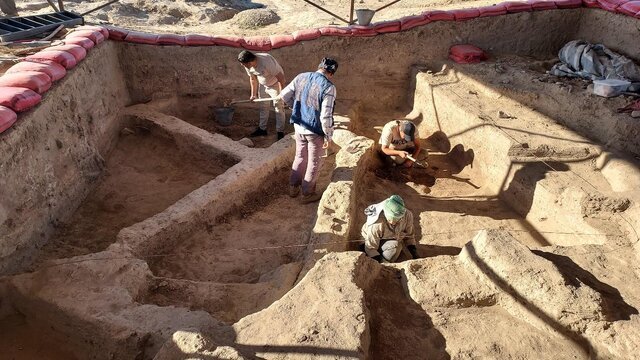Tehran – The third season of archaeological excavations has officially begun at Choga Golan, an important Neolithic site located at the foot of the Zagros Mountains near Melan in Ilam province.
The project is taking place at Iran’s largest Neolithic site and is granted permission from the Institute of Cultural Heritage and Tourism, Isna reports.
According to Hojjat Darabi, head of Chogha Golan’s archaeology team, excavations this season will include both vertical and horizontal trenches across two regions. The aim is to reveal evidence from the 9th century and 8000 BC to better understand the origins of agriculture and sedentary life in the region.
“So far, we have discovered the rest of the architecture, made of muddy and clay. A considerable number of stone tools and artifacts, clay figurines and objects,” Dharabi said. “In one building space, we discovered six consecutive plaster beds, indicating the multi-generational use of the area by early residents of Chogha Golan.”
Dharabi also highlighted the discovery of a wide range of animal and plant debris from various layers of the site. These findings are expected to provide new insights into the domestication of animals and plants in the Zagros region and the wider regions of Western Asia, archaeologists added.

Chowga Golan, previously studied by German archaeological teams, is notable for his continued human occupation from the early 10th century BC to the mid-8th century. “It covers an area of about 5.5 hectares, making it considered the largest Neolithic archaeological site ever discovered in Iran,” the archaeologist said.
“The site size and expanded occupational sequence will be conducted ongoing excavations at Chogha Golan,” Darabi emphasized. “It not only enhances understanding of early human settlements in Iran, but also strengthens the country’s position in global prehistoric research.”
Excavation surveys are expected to contribute significantly to the field of Near Eastern Archaeology and the study of early agricultural societies.
According to sources, Chogha Golan is particularly notable for its early rearing of Emmer wheat up to about 9,800 bp. Paleophyte sites from Chogha Golan provide the earliest evidence of long-term plant management in Iran.
Located in a semi-arid area about 30km north of Melan, it is one of the earliest aceramic Neolithic sites discovered in Iran. The residents of Chogha Golan relied primarily on hunting and the use of wild plants.
Chogha Golan was jointly excavated in 2009 and 2010 by archaeologists from the University of Tübingen and the Center for Archaeological Research in Iran. The site is characterized by hills rising about 7-8 meters high and contains 8 meters of cultural sediment.
morning

